It starts here: How to present your portfolio through Instagram
Instagram offers plenty of opportunities to network with potential customers, talent spotters and future employers. It is a fantastic place to showcase your work and to build your own beautiful online portfolio for free. Katie Dominy, Co-Founder of Artsthread, a digital platform for emerging artists and designers, shares her top tips on how to grow your reputation and to best create a visual showcase of your work.
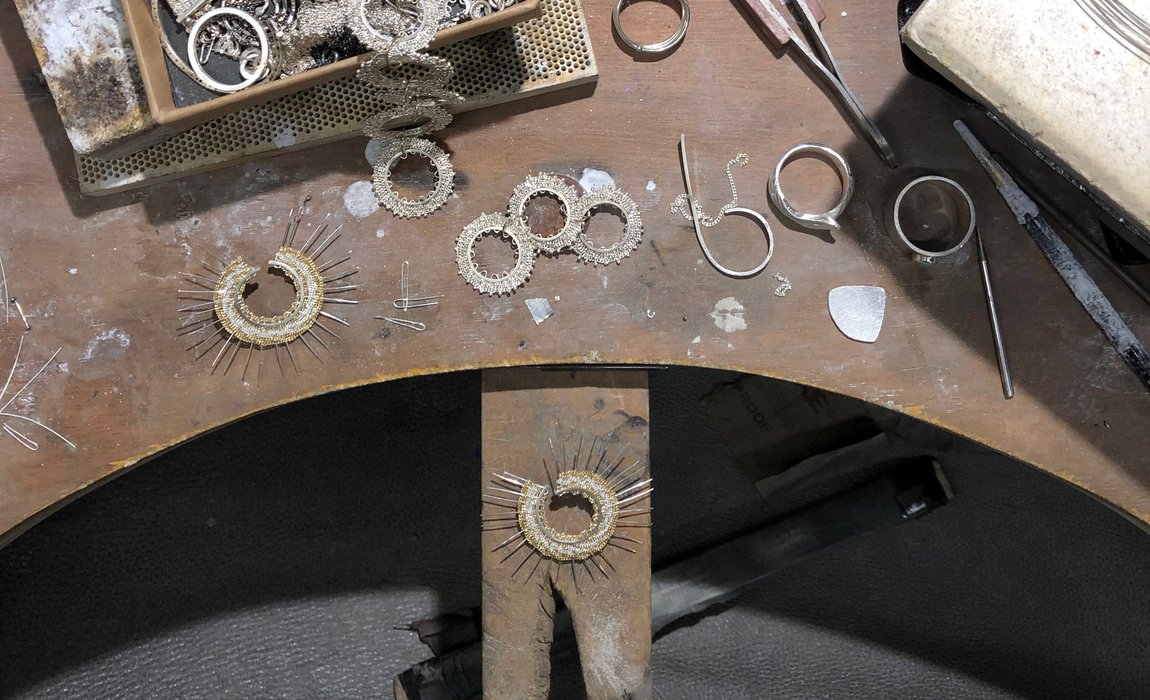 Megan Brown's jewellery bench featured on Intagram @meganbrownjewellery
Megan Brown's jewellery bench featured on Intagram @meganbrownjewellery
#1 Professional versus personal Instagram accounts
Your Instagram channel is your portfolio! So, when you start using Instagram, make sure you differentiate between your personal and professional life.
You don’t want followers to be questioning if that’s really you on Instagram – the person who said that they made jewellery or silverware. Alternatively, you don’t want potential customers questioning your professionalism because they’ve seen posts that are perhaps too personal.
Some designer makers manage to combine both their personal and professional lives on Instagram. They use it to talk about their work, but also share personal stories which demonstrate their passion and inspiration. Yet, that does not suit everyone.
If it is not for you, it’s fine to have two Instagram accounts: one which shows your personal life, such as the dog you love, your family, what you had for dinner, and a professional one which is about your work.
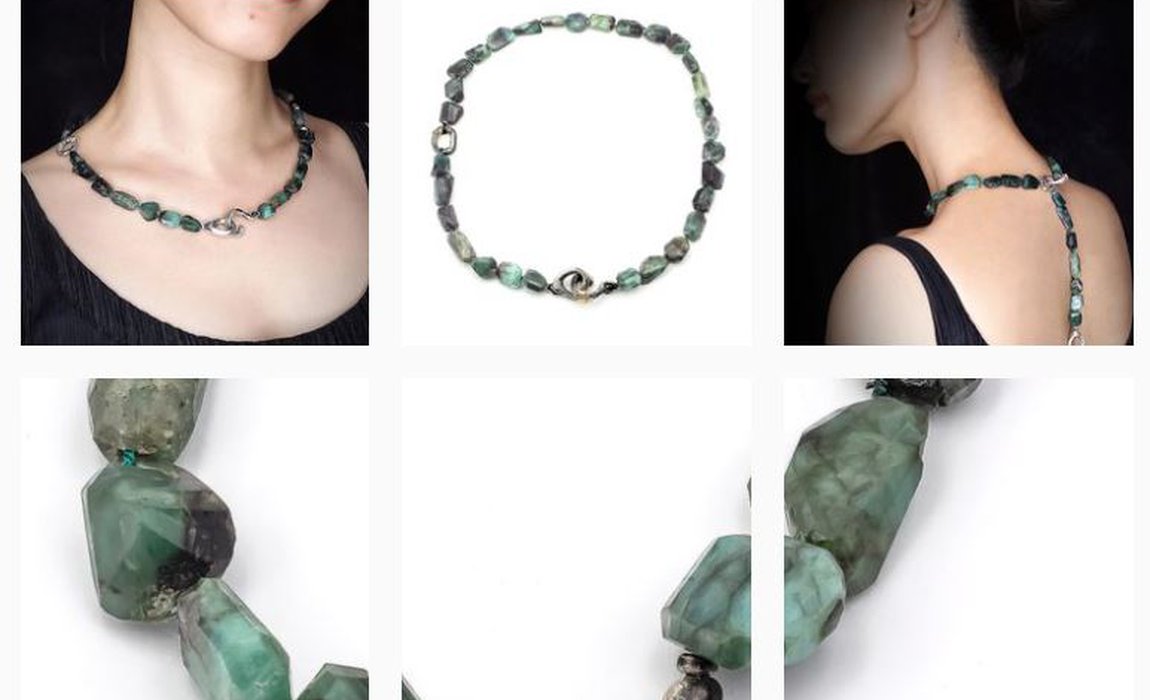 Jeweller Weinan Pan's @weinan_pan
Jeweller Weinan Pan's @weinan_pan
#2 Get your Instagram bio right
Your Instagram bio is your business card. Within a few seconds of landing on your Instagram, others will look at your bio to discover who you are and what it is that you do.
Make sure you write concise copy, which summarises your goals and interests. Clearly display your business name, what you make, where you are based and add an external link to your website or a digital portfolio platform like Artsthread.
You can be creative in your use of language, so add emojis if you like, and let others know exactly what you are about.
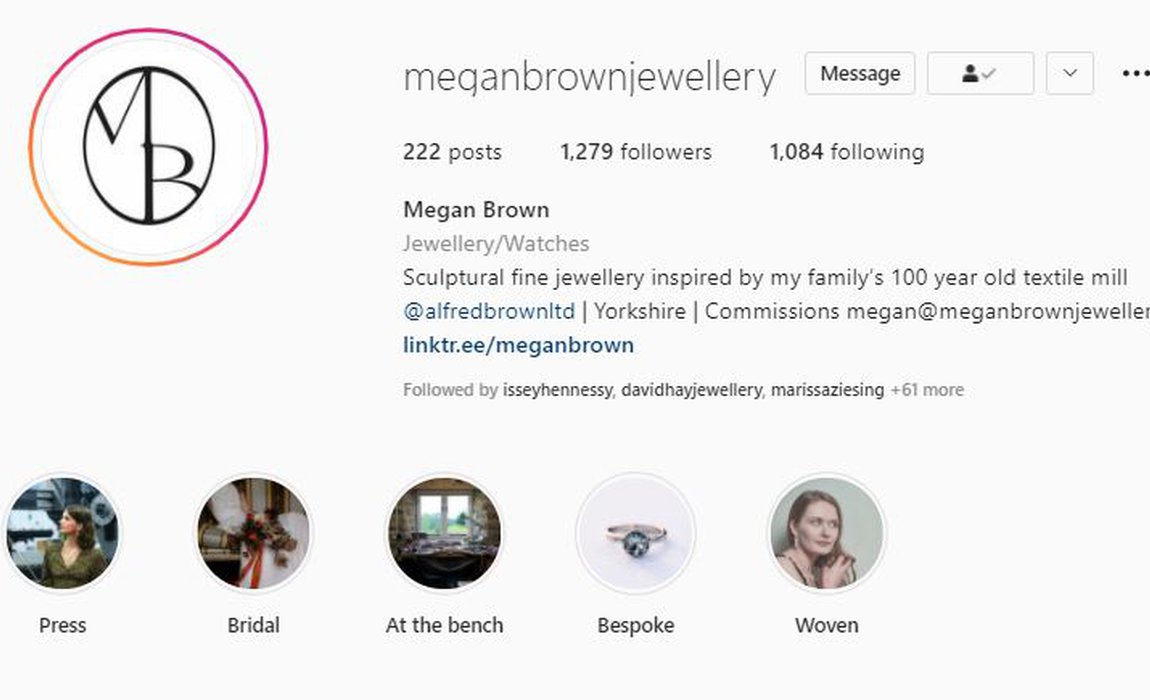 Megan Brown's Intagram @meganbrownjewellery
Megan Brown's Intagram @meganbrownjewellery
#3 Keep your profile active and updated
If you do manage multiple social media accounts and online platforms, keep them updated, professional and about your work!
There is nothing worse than looking at a designer maker on Instagram and finding the last post that they made was a year ago. If that does happen, you need to make a statement. Put in your bio: “Taking a break from Instagram and back next year!”, or just go ahead and deactivate your account.
You shouldn’t make anything live that isn’t complete or your best work. If you’re linking your latest Instagram post to your website, make sure that your website is full of images and content with no typos and don’t leave your About Us page blank!
#4 Share bite-sized content with focus
Instagram is a great platform to share bite-sized and behind-the-scenes content.
You don’t always need to present a new, finished project. You can also share your work in progress and the experiments that you’re doing, with new materials, colours or techniques.
You should always give your Instagram feed some focus or formula. People respond best to an organised structure, that tells a clear story. Use Instagram Stories, IGTV and Instagram Highlights to share your making process without changing the aesthetic of your main feed.
Give your content focus by setting yourself goals and think about what you are doing. If you’re setting yourself goals for the first time, you might need to get used to the transition, so be realistic and give yourself enough time.
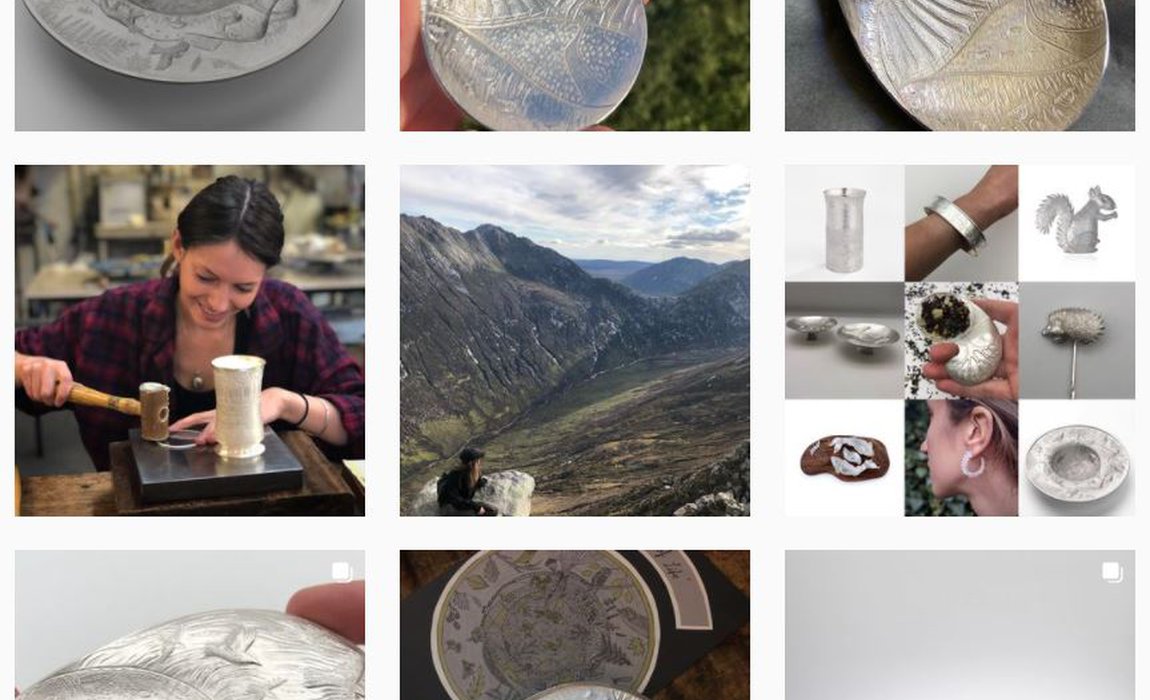 Silversmith Katie Watson's Instagram @katiewatsondesigns
Silversmith Katie Watson's Instagram @katiewatsondesigns
#5 Create strong visuals!
Good photography is key for your portfolio! You can either learn how to take good quality shots yourself, hire a professional photographer, or combine with others to share the costs in a joint session.
Make sure you work out before commissioning a photographer, what you need in terms of the image style, size and format. You don’t want to remember after the session that you missed something important.
There are two different types of photographs that you will need:
- Selling images: that show customers what your pieces look like for purchase. A client will want to see what your work looks like face on, from above, from below and as a close-up taken on a neutral ground and very well lit. These kinds of images are difficult to shoot and you might want to employ a professional photographer.
- Styled images: which show your pieces on a model or placed in front of an interesting backdrop. These kinds of images are easier to take yourself.
If you are working with a model for the first time, use a friend. It can get complex and expensive when using a professional model. But whether you go with a friend or a professional, you must get them to sign an agreement that all pictures are yours, and that you can publish them on your Instagram channel and wherever else you like.
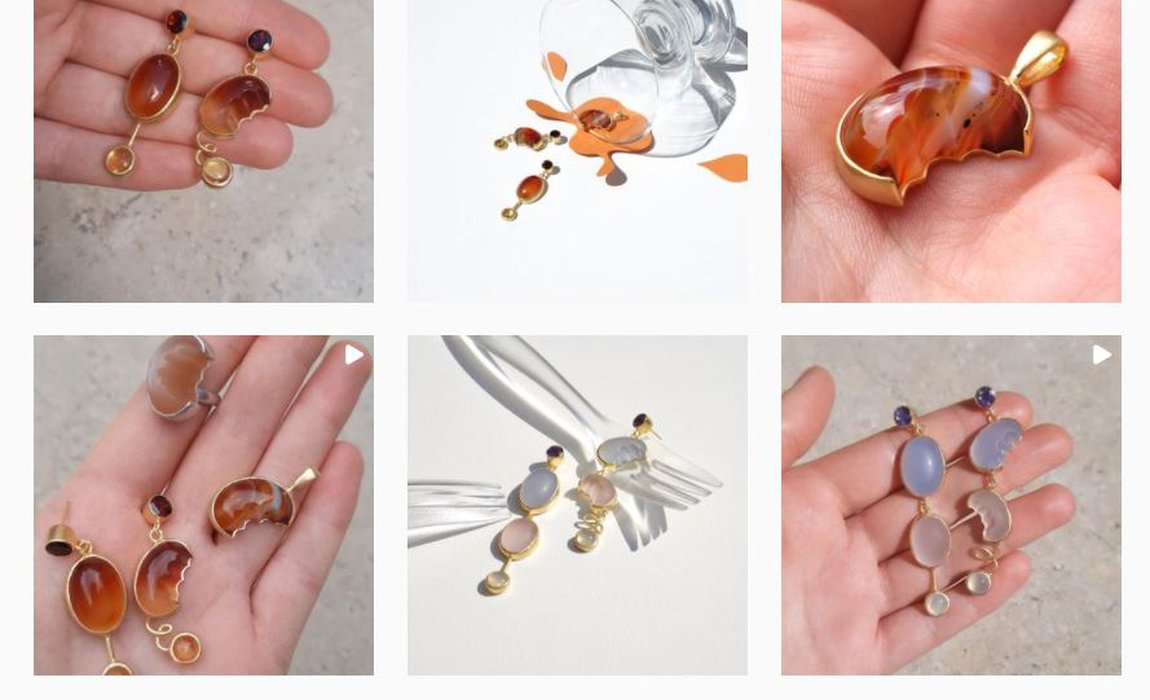 Jeweller Isla Gilham's Instagram @islagilhamjewellery
Jeweller Isla Gilham's Instagram @islagilhamjewellery
#6 Make sure your Instagram gets found
If you have online presence, it might be difficult to be found by others. It’s a great to be listed on larger online platforms that have a big following to build your own connections.
Artsthread allows you to share your profile, latest work and social media links for free with people who are looking for emerging talent from around the world. They also share listed profiles with a database of over 20,000 industry, arts and design professionals and members of the public. New connections may message you direct if they want to buy your work, collaborate or want to invite you to a selling showcase, gallery or museum exhibition.
Also remember to tag others in your Instagram posts and use branded hashtags to connect with new contacts and communities in the industry. This is also a great way to be found!
 Silversmith Daniella Wilde's Instagram @danniella.wildeflower
Silversmith Daniella Wilde's Instagram @danniella.wildeflower
#7 Ask for help!
If social media is not your thing, get friend to help you – just give them a little thank you, such as a bottle of wine or a box of chocolates. Explain that all they need to do is to take some pictures and put them online for you.
Even if you are good at social media, you don’t want to be turning away customers at a show because you are half-way through writing a social media post. Make sure you can pre-schedule your social media posts or simply ask a friend to help you.
So, start to think about who in your network can do little things to help that are not your specialism.